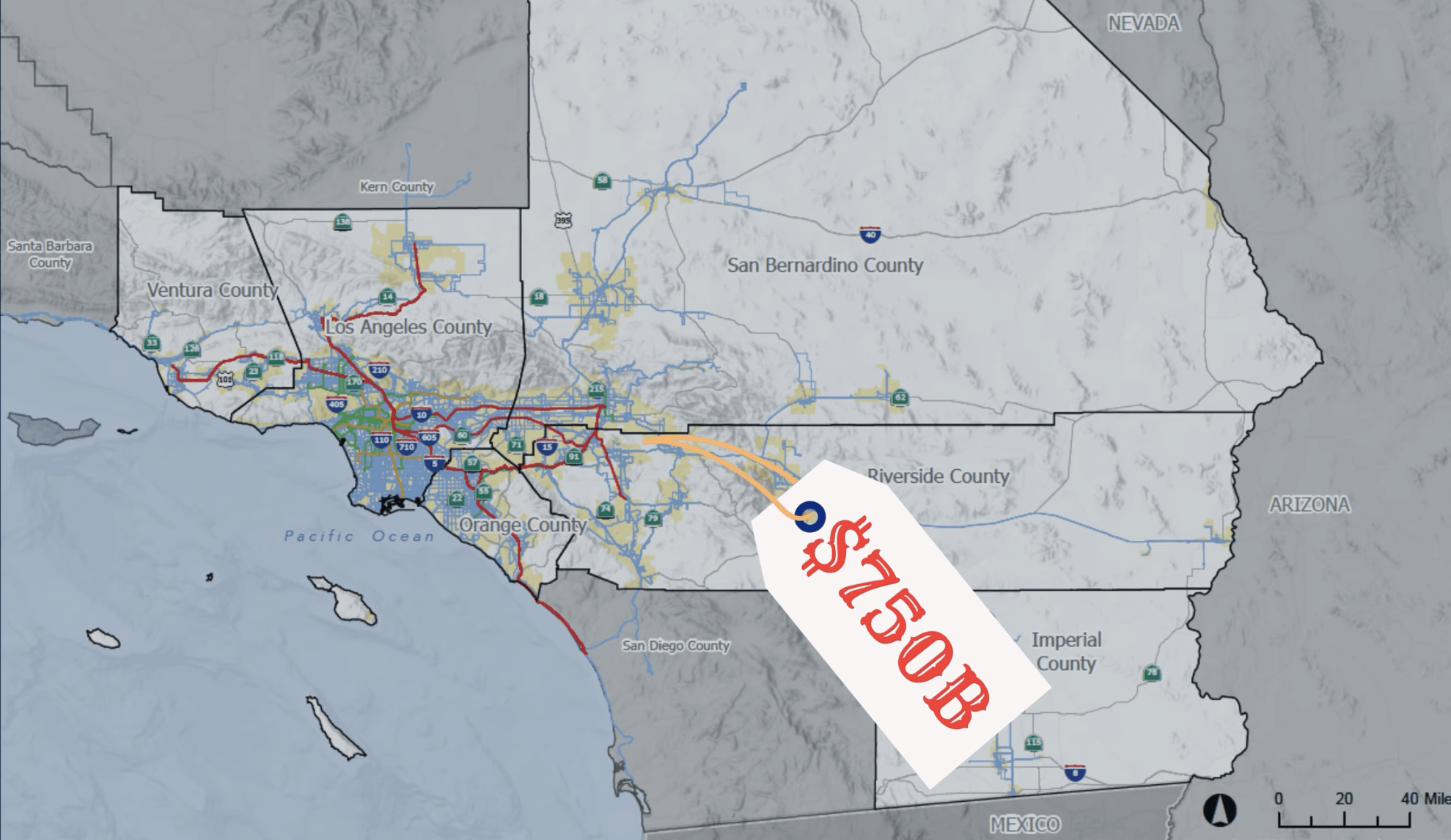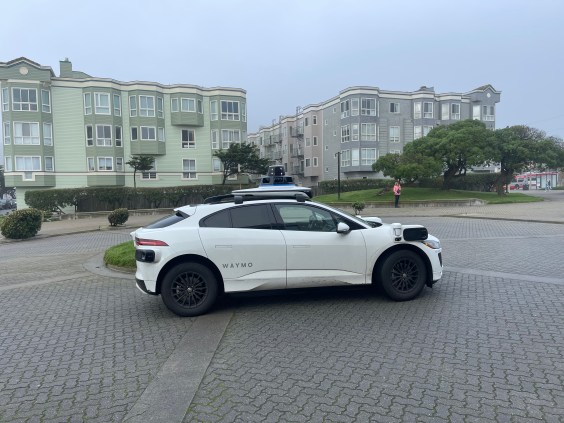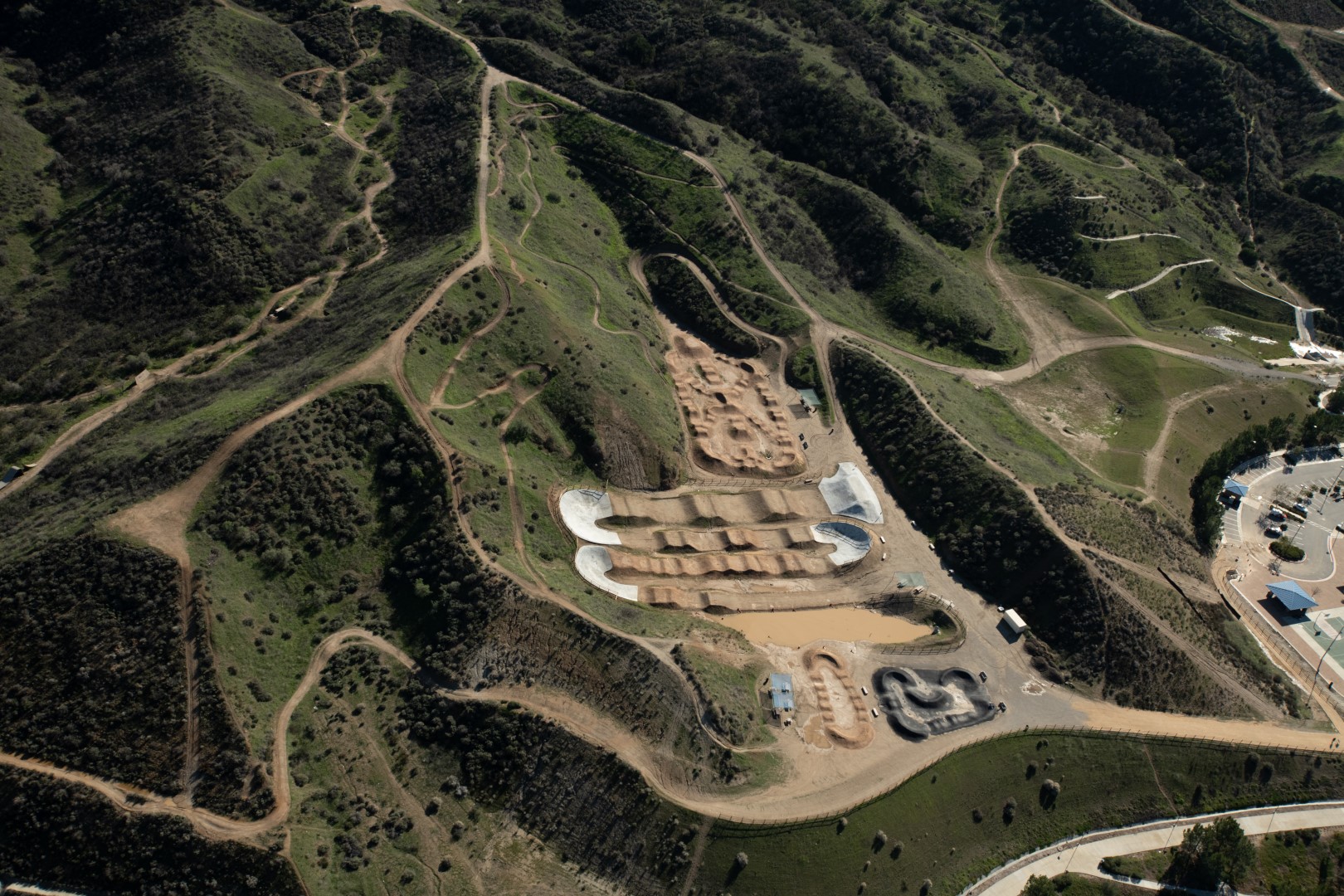SCAG is on track to miss CARB VMT reduction targets
What’s on your calendar for 2050? Not sure? Well, what about the calendar for your community - for how it will look and how people will get around twenty years from now? If you live in Southern California, the Southern California Association of Governments, better known as SCAG, is currently asking for your thoughts on just these questions. SCAG is working on its twenty-year vision for transportation, and the deadline for comments is this week, on January 12.
The 2024 Connect SoCal plan, as SCAG has named its Regional Transportation Plan/Sustainable Communities Strategy (RTP/SCS), is available to peruse, but it seems to be mostly a compilation of all the local plans from the 200 or so jurisdictions that make up SCAG, stapled together with little tweaks here and there.
SCAG presents it as being the product of a collaborative endeavor between it and its constituent jurisdictions, with SCAG setting broad goals, policies, and performance metrics, and the other agencies developing plans within those parameters as well as providing feedback on them to SCAG. Based on my personal observations, from having participated in the previous two RTP/SCS rounds in 2016 and 2020, the plan is very - shall we say - “aspirational.”
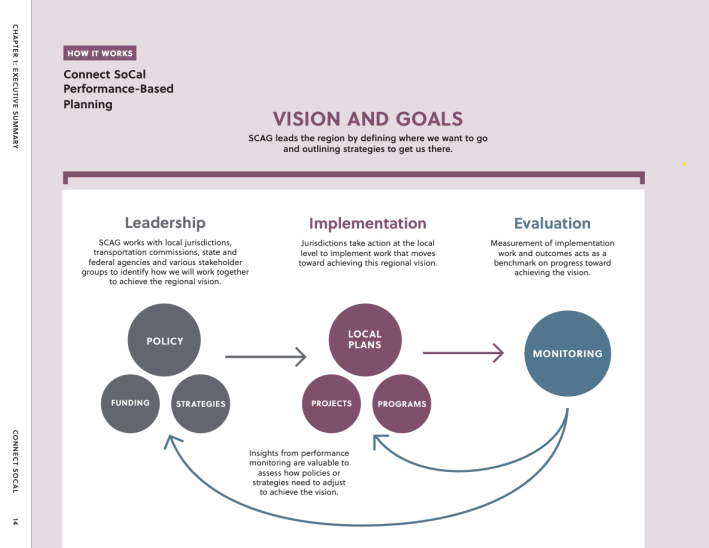
It is a document with lofty promises, including “4,000 new miles of bike lanes”(!) and “more housing, jobs, and mobility options closer together in Priority Development Areas to preserve natural lands and open spaces.” The plan also declares transit to be "a backbone of the transportation system.”
But a glance at the appendices and technical reports raises many doubts about whether the region will even remotely be able to deliver on any of those promises.
Perhaps the most revealing part of the plan is its Project List. In it, all the agencies must list every single transportation project they are planning over the next several years - because a project must be listed on the RTP/SCS in order to get funding from sources like the federal government.
Based on SCAG's plan, the transportation system will cost an estimated $750 billion over its planning period. And based on what is on those lists, most of that will be spent on roads - usually widening them.
Thus, it is hard to reconcile that project list with SCAG's lofty, aspirational promises, much less goals required by the California Air Resources Board (CARB).
In 2022, CARB adopted a Scoping Plan, which among many things called for reducing vehicle miles traveled (VMT) by 25 percent below 2019 levels by 2030 and by 30 percent by 2045. While the Connect SoCal plan does mention some level of VMT reduction that might be realized, it is nowhere close to the CARB goal, and even if it could be achieved it would be decades late. Also, while the 2024 project list does not include a target completion date for every project, in the past SCAG's lists have often placed a priority on road projects and left good non-road-widening projects for later. If the transportation projects are prioritized according to the current list, it is conceivable that VMT in the SCAG region would rise by 2030 instead of falling by 30 percent, as CARB is seeking.
Obviously, incorporating ways of reaching the necessary VMT reduction goals simply cannot wait until the next RTP/SCS cycle four years from now, as that would result in needing to plan to achieve that 25 percent VMT reduction - and an even larger cut might be needed by that time - within the span of about thirty months, which obviously would be a tall order.
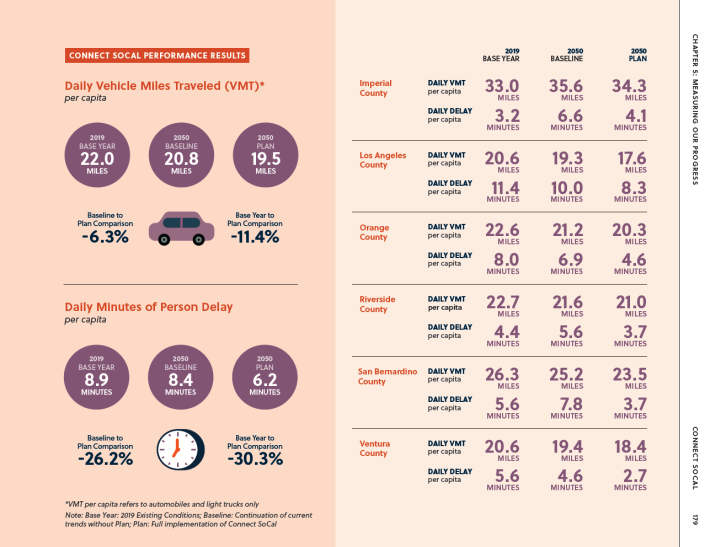
Background: The Alphabet Soup
SCAG is the metropolitan planning organization (MPO) for all of Southern California, with the exception of San Diego County, which instead has SANDAG—the San Diego Association of Governments. If you live in either Imperial, Los Angeles, Orange, Riverside, San Bernardino, or Ventura counties, you live within SCAG’s boundaries. The federal government requires an MPO for any area with a population of 50,000 or greater, but to my knowledge there’s no upper limit, and SCAG is actually the biggest MPO in the country in terms of population. It covers nearly 200 jurisdictions - the cities and counties from all six counties mentioned above
One of the responsibilities of the MPO is to prepare the regional transportation plan and sustainable communities strategy document (RTP/SCS) for their region. The RTP is required by the federal and state governments, and according to Caltrans it is supposed “to identify a twenty-year vision for transportation priorities and investments.” It must be updated every four years. Projects included in the RTP must have an identified funding source, and can be local, regional, state, or federal projects. For this reason, the list of projects is continually updated, apart from the four-year project cycle.
Meanwhile, the SCS is required by state law. It is supposed to forecast development patterns for the region, and according to the California Air Resources Board (CARB), “help California meet its climate and air quality goals, as well as advance community goals for public health, accessibility, equity, conservation, the economy, and much more.” That is, the SCS should help the region identify emissions reductions targets and integrate with the transportation network planning in the RTP to describe how the region will align development and transportation investments to meet them. The targets are set by state statute as well as by CARB, in its scoping plans.
As stated, Connect SoCal is the name that SCAG uses for its 2024 RTP/SCS. The name is not original to this year’s version - it was used in 2020 too. Maybe "RTP/SCS” just doesn’t quite have the same ring to it. Drop a comment below on whether you think they got the name right or if they should pick something else next time around.
SCAG is on track to adopt Connect SoCal 2024 in a few months, but it's not yet complete. Unfortunately, all of the public hearing dates have already passed and it looks like they have not put any videos of any of those sessions online (yet), so you will have to read the plan yourself to get in-depth info.
Nevertheless, accessing the plan and commenting on it are easy enough just by going to www.connectsocal.org. Comments can either be typed directly into the comment box on that site, or pre-written materials or illustrations can be uploaded. There are a number of informational videos available as well.
Thank you for taking the time to care about the alphabet soup side of government. Make sure you get your comments in by January 12 so that they can be addressed in the final plan.
Inland Urbanist also made a video explaining these concepts: check it out below.
